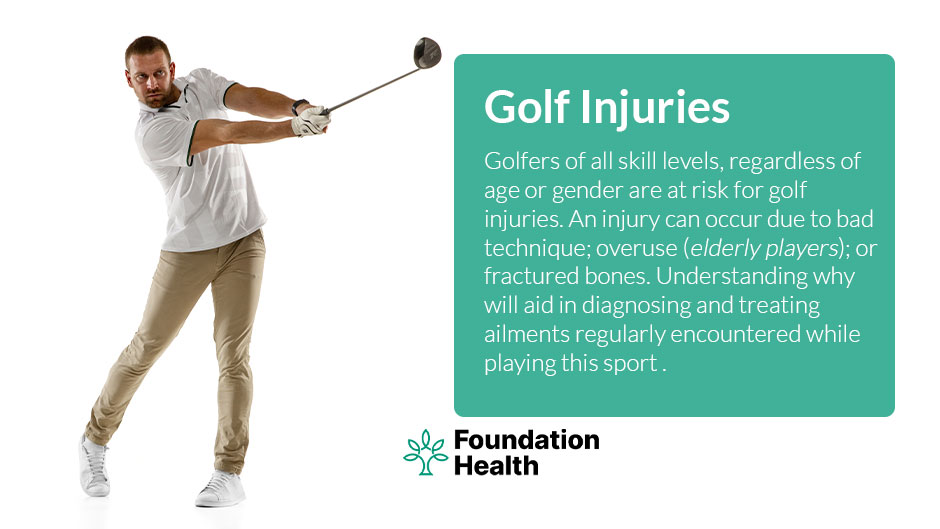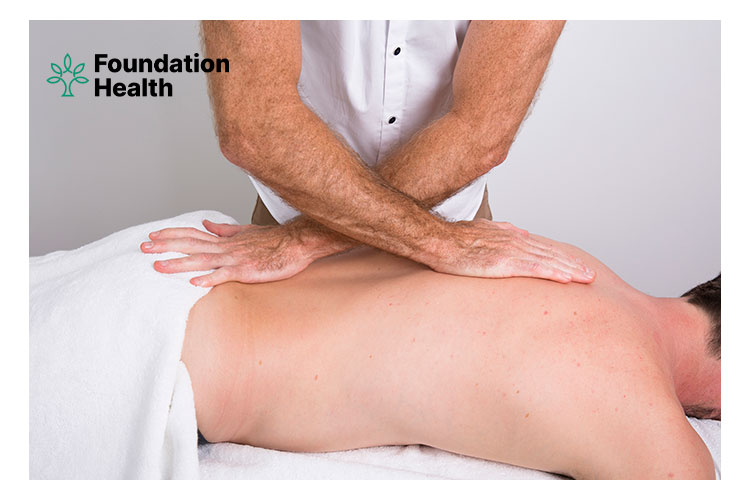Many people perceive golf as a low-intensity physical sport that does not provide a significant risk of injury. However, the explosive nature of the swing can put a tremendous amount of stress on the body.
Golf injuries are prevalent among golfers of all skill levels, regardless of age or gender. An injury can occur due to bad technique, overuse, or a direct blow to the body. Golfing can cause various types of injury, including bone fractures, ankle sprain, elbow strain, spinal issues, knee pain, hip pain, back pain, and wrist sprains.
Understanding why will aid in the timely diagnosis and treatment of ailments regularly encountered while playing golf.
What are the most common golf injuries?
Wrist injuries
- Carpal tunnel syndrome: This occurs when the nerves that run through your wrist bones (carpal tunnel) become pinched due to joint swelling or structural damage. It causes numbness and weakness in your fingers and hand.
- Sprain: A wrist sprain occurs when your golf club collides with something hard, like the ground, bunker sand, or a tree root. Ligaments stretched or torn can cause pain, swelling, bruising, and instability.
- Tendonitis: As a result of overuse, the tendons in your wrist can become swollen and inflamed.
Back pain
- Bone/stress fractures: This occurs due to repeated rotational movements, causing dull pain and a sense of instability.
- Muscle strain or ligament sprain: This occurs when your back’s muscles and ligaments are stretched, causing pain, inflammation, and muscle spasms.
- Arthritis: The degeneration of cartilage and bone in your lower back joints can be caused by repetitive golf movements, resulting in symptoms of pain and stiffness.
- Disc injuries: A golf swing will likely aggravate the condition if you damage the discs that separate your vertebrae. Disc degeneration, herniated or ruptured discs, and other disc injuries are all susceptible to the repeated motion of a golf swing.

Tendonitis of the elbow
- Golfers elbow is characterised by pain on the bony bump on the inside of the elbow joint. If left untreated, it can cause joint weakness and stiffness.
- Tennis elbow is an inflammation of the tendon on the outside of the elbow caused by lateral epicondylitis.
Shoulder pain
- AC joint pain: This is caused by an injury to the top of your shoulder’s joint.
- Instability: A soft tissue or bone damage can cause the joint bones to dislocate.
- Subacromial impingement: This is caused by inflammation and impingement of the rotator cuff tendons, which support and move your shoulder joint.
- Frozen shoulder: This is a painful condition causing stiffness and lack of mobility in the shoulder joint.
- Rotator cuff tears: This occurs when the muscles and tendons surrounding the shoulder joint are strained or injured by the repetitive movement of a golf swing.
- SLAP tear: The ring of cartilage that surrounds the socket of the shoulder joint (labrum) can be ripped as a result of a golf swing’s over-rotation.
- Arthritis: Overuse of any joint can wear away the smooth cartilage that coats the bones, resulting in arthritis. The exposed rough bone surfaces produce friction in the joints, leading to bone spurs, misalignment, and soft tissue injury in the shoulder.
- Rotator cuff tears: occur when the muscles and tendons surrounding the shoulder joint are strained or injured by the repetitive movement of a golf swing.
How do you treat a golf wrist injury?
When wrist discomfort and swelling initially emerge, the best course of action is to rest and apply ice to reduce swelling. Heat applied to the affected area might help reduce pain and stiffness. A compression wrap, wrist brace or splint may also be beneficial. If pain persists, then consult an osteopath for an assessment and treatment.
What helps sore fingers from golf?
- Stretching and resting your fingers and hands.
- Changing your grip technique. In the long run, gripping the club too high across your palm (a weak grip) can lead to injury.
- Changing your grip or putting on gloves. Most golf club grips are four diameters to fit different hand sizes to prevent your hands from gripping too tightly and causing finger pain.
How do you prevent golf injuries?
Golf injuries can be prevented by improving swing mechanics, participating in golf-specific training and conditioning programs, purchasing adequately fitted equipment, avoiding long practice sessions, always performing a warm-up routine before practice and play, and golf-specific stretching regularly.
Final thoughts on Common Golf Injuries
Preventing golf injuries is better than having to recover from them. The best way to avoid these common golf injuries is to be physically prepared to play.
To be effective, rehabilitation and prevention programs need to address both movement patterns and muscle imbalances as well as technical swings.
If you are suffering from pain due to playing golf, book an appointment with one of our expert osteopaths at Foundation Health for a professional assessment today!



